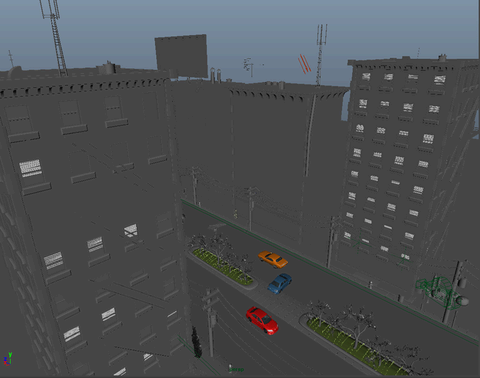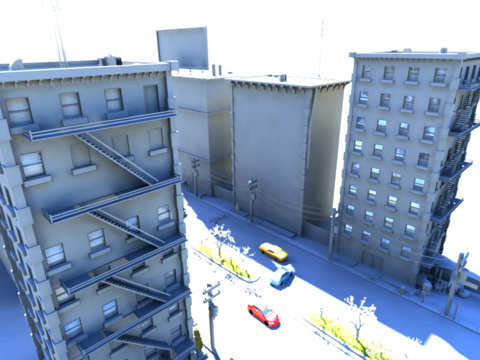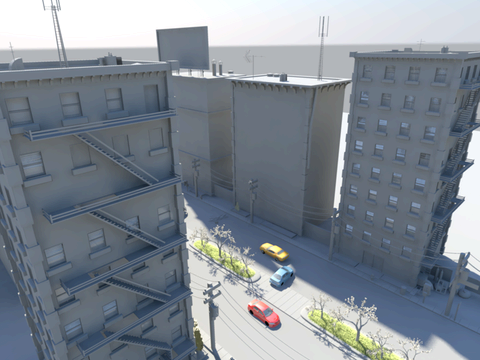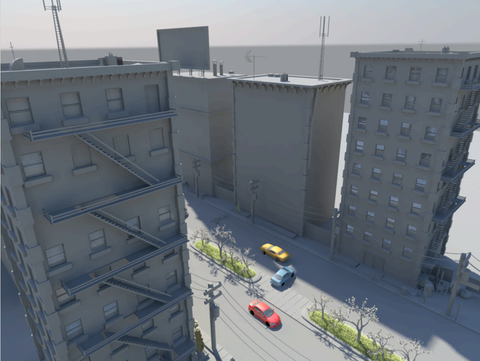This example scene consists of a city view with buildings and cars, with the mia_physicalsun and mia_physicalsky shaders applied for lighting.

This example demonstrates how to:
Using mia_physicalsun and mia_physicalsky with color management
If your scene includes the mia_physicalsun and mia_physicalsky shaders, you must disconnect the mia_physicalsky lens shader from all cameras that you want to render from. Otherwise, your result may appear incorrect.
 the Lens Shader attribute and select Break Connection to break the connection between the lens shader and each of your cameras.
the Lens Shader attribute and select Break Connection to break the connection between the lens shader and each of your cameras.
Setting up your Render View to display HDR images
In order to view 32-bit floating point images in your Render View, you must set your Render View display options accordingly.
When rendering an image using the .exr file format, you must change your framebuffer type to 32-bit float. Otherwise, your image will be clamped to [0, 1].
Enable color management in your Render Settings
Enable color management in your Render view
Tweak the exposure and contrast of your Render View image
Tweak the Exposure and Contrast sliders to view details in the over-bright and over-dark regions of the image.
For more information about these attributes, see Render View color management node.
Save your color managed output
After you have adjusted the Exposure and Contrast settings, you can save your color managed output.
 and select Save Color-Managed Image.
and select Save Color-Managed Image.
The following image is the render output saved using the Save Color-Managed Image option, but with the Display Color Profile set to Linear sRGB and the Exposure and Contrast sliders set to 0. This image is best used for compositing as it allows you to apply additional calculations.

The following image is the render output saved using the Save Color-Managed Image option, but with the Display Color Profile set to sRGB and with the Exposure and Contrast set to custom values.

The following image was rendered with the lens shader attached to the camera and with color management disabled in the Render Settings window. Use it as a reference and compare it to the previous two images.
